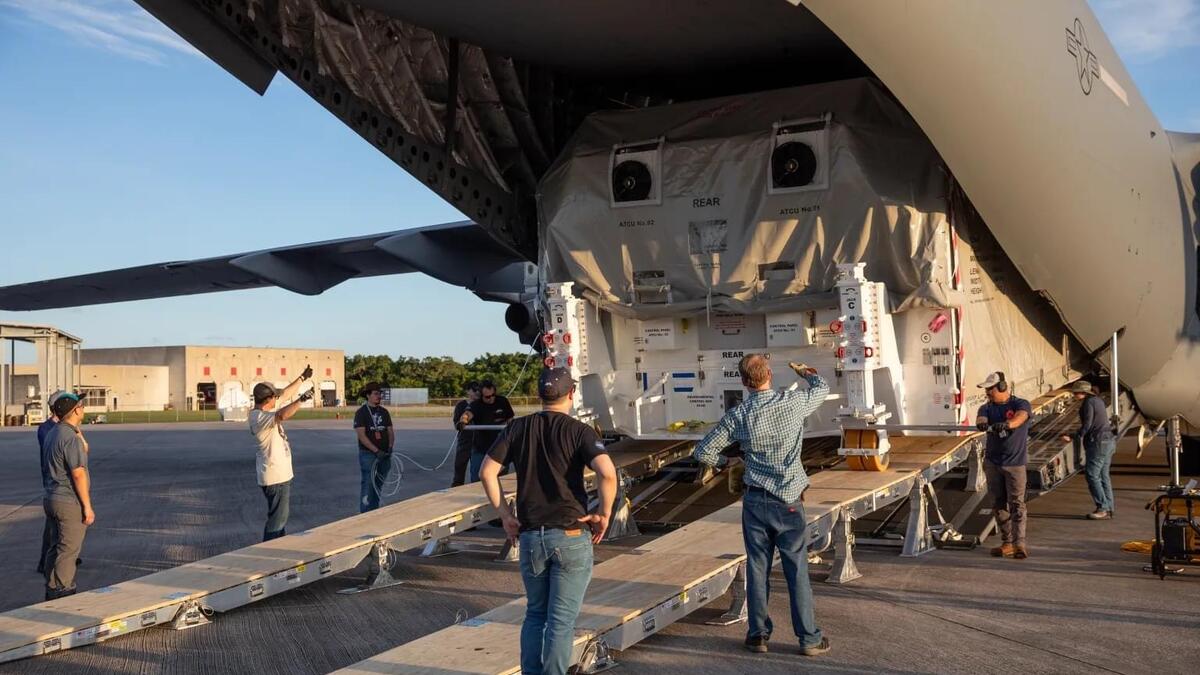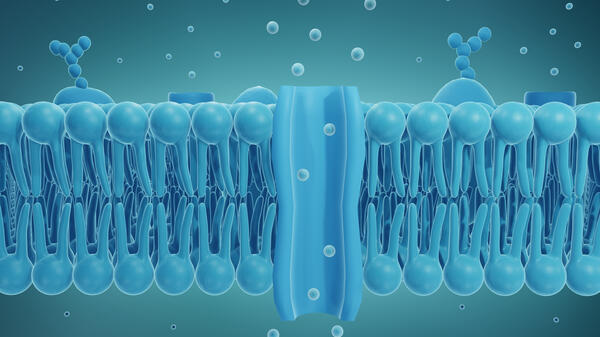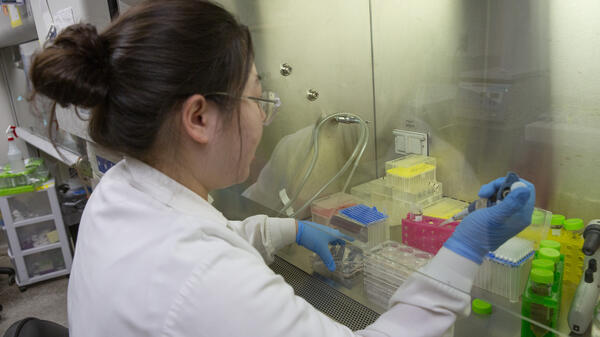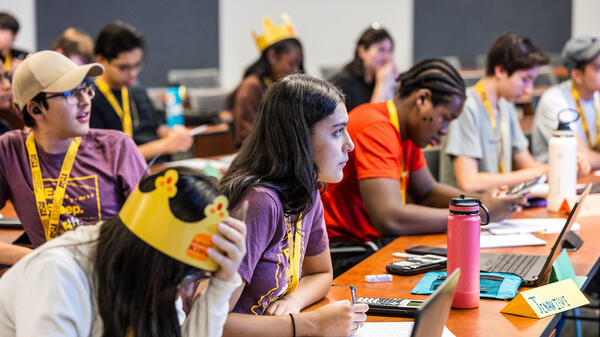ASU team cheers arrival of NASA's Europa Clipper spacecraft in Florida

Team members celebrate the arrival of the Europa Clipper spacecraft, which successfully made the journey from NASA’s Jet Propulsion Laboratory in Pasadena, California, to NASA’s Kennedy Space Center in Florida. Photo courtesy ASU's School of Earth and Space Exploration
The Europa Clipper spacecraft has successfully made the journey from NASA’s Jet Propulsion Laboratory in Pasadena, California, to NASA’s Kennedy Space Center in Florida.
Over the summer, the spacecraft will prepare for launch aboard a SpaceX Falcon Heavy rocket. Launch is currently scheduled for October, and Arizona State University graduates and scientists have important roles in the mission.
Europa Clipper is a robotic, solar-powered spacecraft designed to explore Jupiter's icy moon Europa, to investigate whether conditions on Europa could support life.
“We're trying to understand whether Europa could be a place where simple life forms might exist as microbial life. Could it exist in an ocean beneath a layer of ice?” says ASU alumnus Robert Pappalardo, who is a project scientist for the Europa Clipper mission. “At Europa, we want to understand Europa's interior, its geology and its composition, and whether it's active.”
Once the spacecraft is deployed, it is planned to conduct approximately 50 flybys of Europa while sending data back to Earth. Pappalardo earned his PhD through the department of geological sciences at ASU, now known as the School of Earth and Space Exploration.
The Europa Clipper spacecraft is equipped with two cameras and several spectrometers to take photos and produce compositional maps of Europa's surface. The Europa Thermal Emission Imaging System, or E-THEMIS, is led by principal investigator Philip Christensen, a Regents Professor in ASU’s School of Earth and Space Exploration.
“E-THEMIS is an infrared camera that works like a night-vision goggle,” says Christensen. “And the hotter things are, the more infrared light they give off. Europa is covered with these fractures, and we think the ice is moving around, similar to the Arctic ice on the Earth.”
Differences in temperatures of the surface features of Europa could be revealed by the E-THEMIS. This could lead to a better understanding of what is going on above and below the moon’s top layers.
Video by Stephen Filmer/ASU Media Relations
Both Pappalardo and Christensen grew as scientists under the mentorship of the late Ron Greeley, a professor who taught space and geosciences at ASU before his death in 2011.
“Ron led the science definition teams to determine what science should be done with a dedicated mission to Europa,” says Pappalardo. “That effort became the Europa Clipper.”
The spacecraft’s vault plate, which covers and protects sensitive parts of the electronics, bears Greeley’s name and image. It has been bolted in place by NASA engineers and will make the journey to Europa.
The journey to Jupiter is a long one and will take about five and a half years. The primary science mission is planned to last about four years. The overall life of the mission is expected to span 10 years.
The Europa Clipper launch period starts on Oct. 10. It will be the largest spacecraft NASA has ever developed for a planetary mission.
More Science and technology

Chilling discovery: Cold-sensing protein may pave the way for safer pain relief
For millions of people worldwide who live with chronic pain, the only treatments currently available often rely on opioids, which carry the risks of addiction and overdose. However, new research…

Harnessing benefits of stem cells for heart regeneration
Mehdi Nikkhah, an associate professor of biomedical engineering in the Ira A. Fulton Schools of Engineering at Arizona State University, and his collaborators at Mayo Clinic in Arizona have been…

Newly accredited ASU summer program opens up STEM opportunities for underrepresented students
It was Monday afternoon. Spotify was playing pop music in the background and the instructor stood behind a lectern wearing a paper Burger King crown. It is not a scene one would expect in a college…